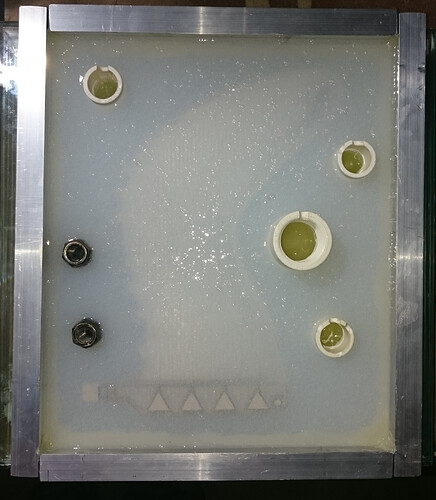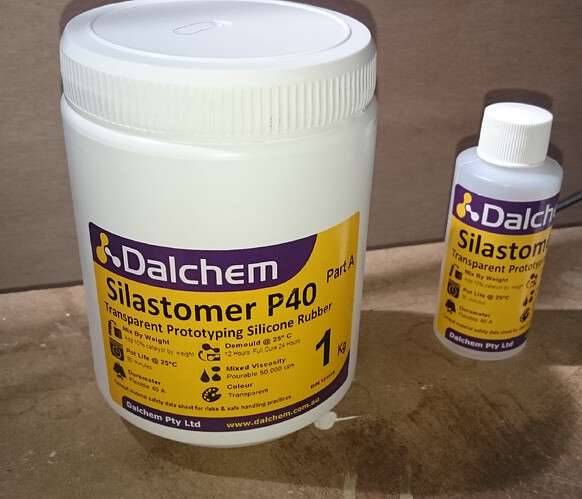No worries, Surffoils, please keep it coming.
The silicone approach is quite expensive and only worth it if there are additional benefits, other than just getting a fin that you might as well buy for $100.- or even $250.- .
I can not buy another one of the Gullwhale fins, they are not being made any longer, and it has a more complicated shape than most fins, so it is a good example for accepting all this extra work and cost. If the method I am developing works with this fin, it will work with most fins, and I end up with a fin that I can surf and cannot get any other way.
Where your advice about casting in plaster or concrete comes in handy is here: I want to make rough plaster casts of the gullwing fin, and then refine the shape by hand. I already have the perfect template: The marine ply / carbon / Kevlar laminate I made a week ago is large enough to encapsulate both the straight tip gullwing fin and the standard gullwing fin. It is the one shown above in the cheap plastic container I bought yesterday after your comments about casting. I was waiting for the next installments and kept checking swaylocks on my phone while I was out shopping, in case I need something else.
So I bought some more PoP yesterday and the large enough plastic box, in order to allow easier and frequent casting of temporary moulds. I’ll make a cast of the laminated outline, then cast it in plaster. Next I’ll refine it’s shape, e.g. shape the fin box tab more closely to what I need, and then make another mould of the better shape. Backups so to say, they need to be easy and quick and cheap. And I’ll want to try to recycle the PoP in the process somewhere, although it may not be cost-effective.
So eventually I’ll end up with a mould for a straight-tip Gullwhale fin, without producing much toxic dust. If I mess up a bit and cut a chunk out of a template, I can fill it with moulding clay. If I drop an entire cast and it shatters, I can go back one step to the latest set of plaster moulds and remake it.
Your idea to use concrete was great, too. Now I think I’ll make a concrete fin tab with steel rods in it, for hybrid concrete/PoP moulds: A tough tab + fin core that does not need to be re-shaped each time, with a soft PoP fin cast on top of it, ready for easy shaping by hand.






















